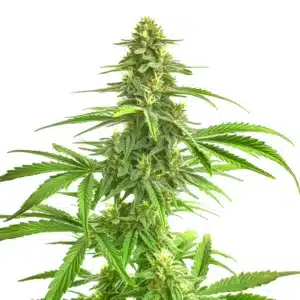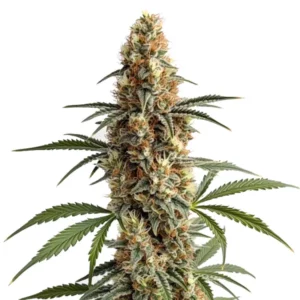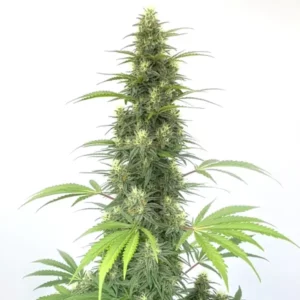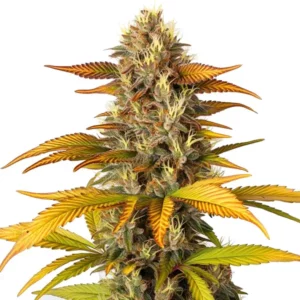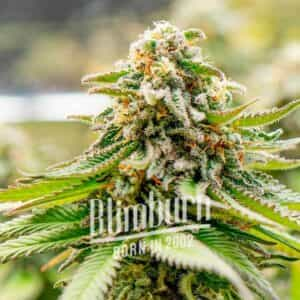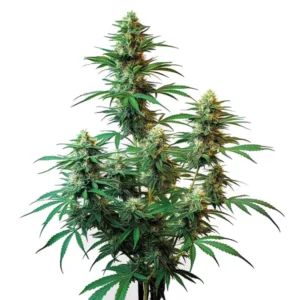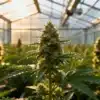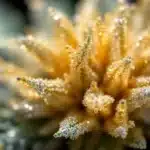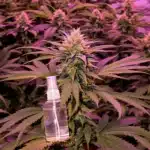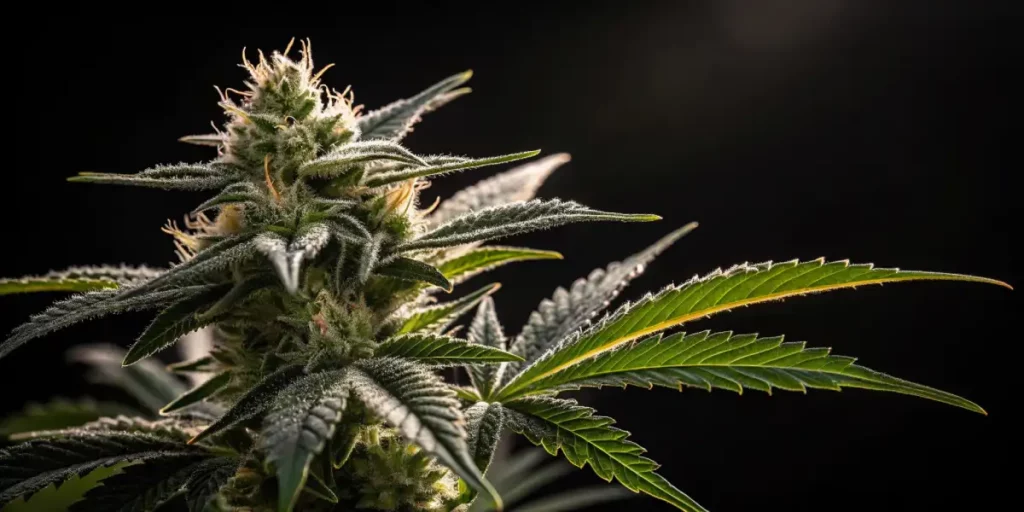
Powdery Mildew vs Trichomes: A Detailed Comparison
When it comes to growing cannabis, it’s essential to understand the differences between powdery mildew and trichomes. Both can appear on your plants, but while one is a sign of healthy growth, the other indicates a potentially damaging disease. In this article, we’ll delve into the key distinctions and provide practical tips for identification.
In the realm of cannabis cultivation, the knowledge of powdery mildew vs trichomes can greatly impact the quality of your yield. Knowing the difference between powdery mildew and trichomes will also help you make informed decisions on how to manage your plant’s health, which can ultimately make or break your cultivation experience.
Recommended Strains
Wombat
|
|
THC | 18% - 20% (Medium) |
|
|
Type | Feminized |
|
|
Yield | High |
|
|
Phenotype | 45% Indica / 55% Sativa |
Mamba Negra
|
|
THC | 18% (Medium) |
|
|
Type | Feminized |
|
|
Yield | High |
|
|
Phenotype | 55% Indica / 45% Sativa |
Let’s start with trichomes. These are tiny, crystal-like structures that form on the flowers, leaves, and stems of cannabis plants. Their primary function is to produce cannabinoids, the compounds responsible for the plant’s medicinal and psychoactive effects. Trichomes are a good sign – they indicate your plant is healthy and thriving.
Trichomes play a significant role in the overall growth and development of cannabis plants. They are not just indicators of health, but are also responsible for giving cannabis its unique characteristics. Therefore, knowing how to identify trichomes is key to ensuring the health and quality of your cannabis plants.
On the other hand, powdery mildew is a common fungal disease that affects a wide range of plants, including cannabis. It presents as a white, dusty coating on the plant’s surface, often mistaken for trichomes. Recognizing the difference between powdery mildew vs trichomes is essential for proper plant care. If left untreated, powdery mildew can severely damage your plant’s health and drastically reduce yield quality.
While powdery mildew may initially appear harmless, its effects can be devastating. It can quickly spread throughout your cannabis plants, damaging their ability to photosynthesize and ultimately reducing their overall health and yield. Therefore, early identification and prompt treatment are crucial.
Identifying Powdery Mildew vs Trichomes on Plants
So, how can you tell the difference between powdery mildew and trichomes? There are several key factors to consider. The location, appearance, and texture of these substances can help you determine whether you’re looking at healthy trichomes or problematic powdery mildew.
Identifying powdery mildew vs trichomes on plants is not as daunting as it may seem. With a little bit of knowledge and some keen observation skills, you can easily distinguish between these two. The key is to stay vigilant and regularly inspect your plants to catch any potential issues early on.
Trichomes are primarily found on the buds and leaves of mature cannabis plants. They look like tiny, clear or milky white crystals, and are often compared to frost or sugar. Under a microscope, they have a stalk with a bulbous head. Powdery mildew, however, can appear anywhere on the plant, especially in areas with poor air circulation. It looks like a white or gray powdery substance, hence the name. Unlike trichomes, powdery mildew will not have a crystalline structure under magnification.
When comparing powdery mildew and cannabis trichomes, it’s crucial to note that while both may appear similar to the untrained eye, they are distinctly different. With the help of a magnifying glass or microscope, the differences become even more apparent. Trichomes are crystal-like structures, while powdery mildew lacks this crystalline form and appears more as a disarrayed powdery substance.
Guide to Powdery Mildew and Trichomes Differentiation
Regardless of whether you’re growing Wombat, Critical Daddy Purple, or Mamba Negra from Blimburn Seeds, differentiating between powdery mildew and trichomes is crucial. Here’s a step-by-step guide for identification:
This guide to powdery mildew and trichomes differentiation provides a simple yet effective way to help ensure the health and quality of your cannabis plants. With these steps, you will be better equipped to distinguish between these two, allowing you to take immediate action if powdery mildew is detected.
- Step 1: Examine the location. Trichomes are mainly on the buds and leaves, while powdery mildew can be anywhere.
- Step 2: Look at the color and structure. Trichomes are clear or milky white crystals, while powdery mildew is a white or gray powdery substance.
- Step 3: Use a magnifying glass or microscope. Trichomes have a stalk with a bulbous head, while powdery mildew lacks crystalline structure.
This guide provides a straightforward approach to identifying powdery mildew versus trichomes on plants. By following these steps, you’ll be able to discern the healthy, beneficial trichomes from the harmful powdery mildew, ensuring the health and yield of your cannabis plants.
If you still can’t tell the difference, it might be worth consulting with an experienced grower or seeking advice from a local extension service. Remember, early detection and treatment of powdery mildew are crucial for maintaining plant health.
When in doubt, don’t hesitate to seek professional advice. Experienced growers and extension services are excellent resources for getting accurate information and advice. Remember, when it comes to powdery mildew vs trichomes, early detection and proper identification are key to maintaining the health of your cannabis plants.
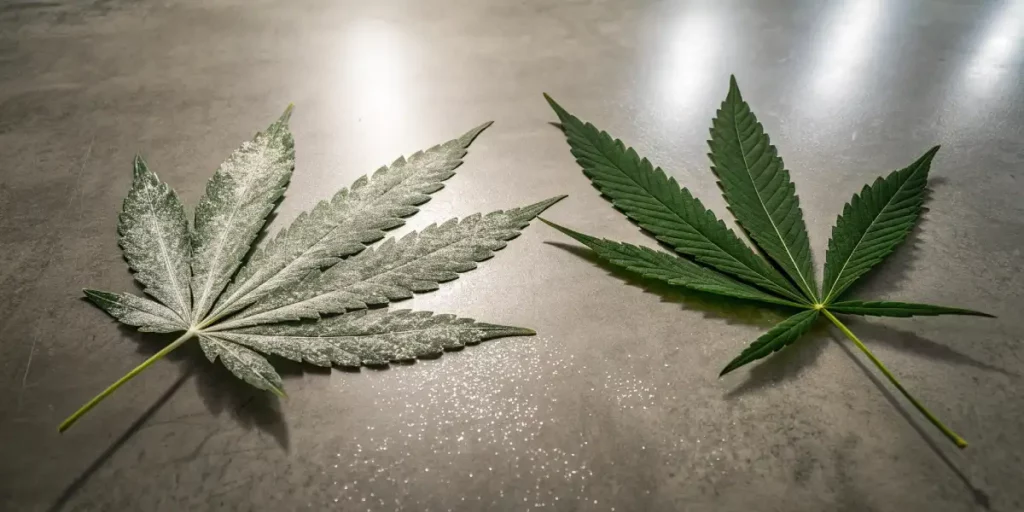
Promos & Deals
Comparing Powdery Mildew and Cannabis Trichomes
While both powdery mildew vs trichomes can appear white and powdery to the naked eye, they have very different impacts on your cannabis plants. Trichomes, as we’ve mentioned, are beneficial and necessary for the plant’s development of cannabinoids. They’re a sign of a healthy, mature plant that’s ready for harvest.
When comparing powdery mildew and cannabis trichomes, it’s important to remember that their similarities end with their appearance. In terms of their roles and impacts on the cannabis plant, they couldn’t be more different. Trichomes are an essential part of the plant’s biology, while powdery mildew is an unwelcome intruder that can cause significant damage.
Powdery mildew, conversely, is a harmful fungal disease. It can stunt your plant’s growth, reduce its yield, and even make the harvested buds unsafe to consume. Therefore, it’s crucial to regularly monitor your plants for any signs of this fungus.
Given the potential damage that powdery mildew can cause, it’s crucial to keep a close eye on your cannabis plants. Regular monitoring can help you catch any signs of this fungus early, enabling you to take immediate action and limit the potential damage.
Prevention and Treatment of Powdery Mildew
Preventing powdery mildew involves maintaining good growing conditions. Ensure your cannabis plants have plenty of air circulation and are not overcrowded. Avoid excessive humidity and water your plants from below to keep the leaves dry. Regularly inspect your plants, especially if you’ve had a previous outbreak.
Prevention is always better than cure, especially when it comes to powdery mildew. By maintaining optimal growing conditions for your cannabis plants, you can significantly reduce the risk of a powdery mildew outbreak. This includes providing adequate space for each plant to ensure good air circulation, which can help prevent the buildup of excess moisture that powdery mildew thrives in. Recognizing the difference between powdery mildew vs trichomes is also important, as identifying the signs of each can help you take timely action and protect your plants.
If you do spot powdery mildew, it’s important to act quickly. Remove and discard any affected leaves. Use a mildew-specific fungicide or a homemade solution of 1 teaspoon baking soda in 1 quart of water. Spray this solution on your plants once a week, preferably in the morning so the leaves have time to dry.
The key to effectively treating powdery mildew is swift action. As soon as you spot any signs of this fungus, immediately remove the affected parts and treat the plant with an appropriate fungicide. Homemade solutions can also be effective, but remember to apply them in the morning to give the leaves ample time to dry, reducing the risk of further fungal growth.
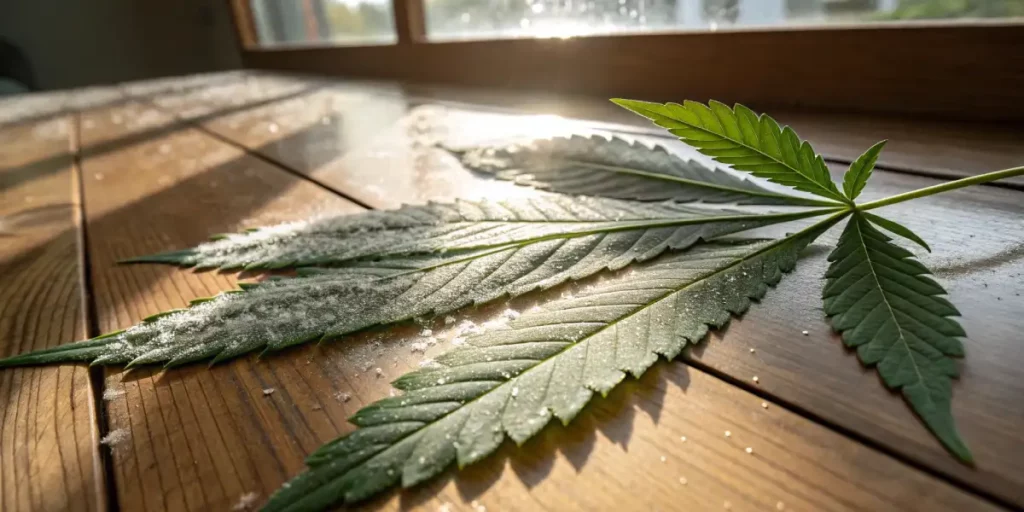
FAQs about Powdery Mildew vs Trichomes
What is the main difference between powdery mildew and trichomes?
The main difference between powdery mildew and trichomes lies in their function and impact on the cannabis plant. Trichomes are beneficial structures that produce cannabinoids, while powdery mildew is a harmful fungal disease. Also, trichomes are crystal-like in appearance, whereas powdery mildew appears as a powdery white or gray substance.
Trichomes and powdery mildew serve very different roles in the life of a cannabis plant. Trichomes are the plant’s natural defense and cannabinoid factory, while powdery mildew is a harmful intruder that can cause significant damage. When comparing powdery mildew vs trichomes, it’s crucial to remember these key differences.
Another difference is their location on the plant. Trichomes are mainly found on the buds and leaves of mature cannabis plants, while powdery mildew can appear anywhere on the plant, especially in areas with poor air circulation.
The location of these substances on the plant can also help you distinguish between powdery mildew and trichomes. Trichomes are typically concentrated around the buds and leaves, while powdery mildew can be found anywhere on the plant. By knowing where to look, you can better detect any signs of powdery mildew and take prompt action to protect your plants.
Can powdery mildew be mistaken for trichomes?
Yes, powdery mildew can be mistaken for trichomes, especially by novice growers. Both can appear white and powdery, which can lead to confusion. However, trichomes are tiny, clear or milky white crystals found primarily on the cannabis plant’s buds and leaves. Powdery mildew, on the other hand, appears as a white or gray powdery substance and can be found anywhere on the plant.
It’s not uncommon for novice growers to confuse powdery mildew for trichomes due to their similar appearances. However, with close inspection and a bit of experience, you’ll soon be able to distinguish between these two. Remember, trichomes are crystal-like structures, while powdery mildew is a powdery substance that lacks a defined structure.
To avoid confusion, regularly inspect your plants with a magnifying glass or microscope. Trichomes have a stalk with a bulbous head, while powdery mildew lacks a crystalline structure.
Using a magnifying glass or microscope can greatly aid in the identification process. These tools can help you see the detailed structures of trichomes and the lack thereof in powdery mildew, making it much easier to distinguish between the two. With practice, you’ll soon become adept at identifying powdery mildew versus trichomes on plants.
How can I prevent powdery mildew in my cannabis plants?
Preventing powdery mildew starts with good growing conditions. Ensure your cannabis plants have ample air circulation and aren’t too crowded. Keep humidity levels in check and water your plants from below to keep the leaves dry. Regular inspections, especially if you’ve previously had a powdery mildew outbreak, can also help nip any potential issues in the bud.
Every step you take to create a healthy growing environment for your cannabis plants is a step towards preventing powdery mildew. By focusing on factors such as air circulation, plant spacing, humidity control, and watering practices, you can significantly reduce the risk of a powdery mildew outbreak. Regular inspections are also essential, as early detection can often make the difference between a minor issue and a major problem.
If powdery mildew does appear, act quickly. Remove and discard any affected leaves and treat the plant with a mildew-specific fungicide or a homemade solution.
When it comes to treating powdery mildew, time is of the essence. The sooner you can identify and treat an outbreak, the less damage it can cause. Whether you choose to use a commercial fungicide or a homemade solution, the key is to act quickly and treat the entire plant to ensure that no traces of the fungus remain.
Are trichomes present in all cannabis strains?
Yes, trichomes are present in all cannabis strains. They are crucial structures that produce cannabinoids, the compounds responsible for the plant’s medicinal and psychoactive effects. Therefore, whether you’re growing Wombat, Critical Daddy Purple, or Mamba Negra from Blimburn Seeds, you should expect to see trichomes on your mature plants.
Trichomes are a universal feature of all cannabis strains. Regardless of the strain you’re growing, you will find these crystal-like structures on the buds and leaves of mature plants. Not only do they serve a protective function for the plant, but they also play a crucial role in the plant’s production of cannabinoids, contributing to the unique effects of each strain.
Remember, the presence of trichomes is a sign of a healthy, mature cannabis plant. They typically appear on the buds and leaves as tiny, clear or milky white crystals.
Observing the trichomes on your cannabis plants can also provide valuable information about their maturity and readiness for harvest. When trichomes begin to appear, it’s a sign that your cannabis plant is nearing maturity. As the plant continues to mature, these trichomes will gradually change from clear to a milky white color, indicating that the plant is ready for harvest.
Can I still use cannabis if it has powdery mildew?
It’s not recommended to consume cannabis that’s been affected by powdery mildew, as it can pose health risks, especially when inhaled. Powdery mildew is a fungus that can produce mycotoxins, which can cause respiratory issues and other health problems. If you suspect your cannabis plant has powdery mildew, it’s best to discard any affected parts immediately.
Consuming cannabis affected by powdery mildew can lead to serious health issues. The mycotoxins produced by this fungus can cause a range of problems, from mild allergic reactions to severe respiratory problems. Therefore, if you suspect that your cannabis plant has been affected by powdery mildew, it’s best to err on the side of caution and discard any affected parts.
Always prioritize the health and safety of anyone who might consume the plant. Remember, prevention is the best strategy to avoid powdery mildew. Keep your plants in optimal conditions, and regularly inspect them for any signs of this fungus.
Powdery mildew can pose a significant risk to both the health of your cannabis plants and anyone who consumes them. Therefore, it’s crucial to prioritize prevention and early detection. By maintaining optimal growing conditions and regularly inspecting your plants, you can keep powdery mildew at bay and ensure that your cannabis plants remain healthy and safe to consume.


